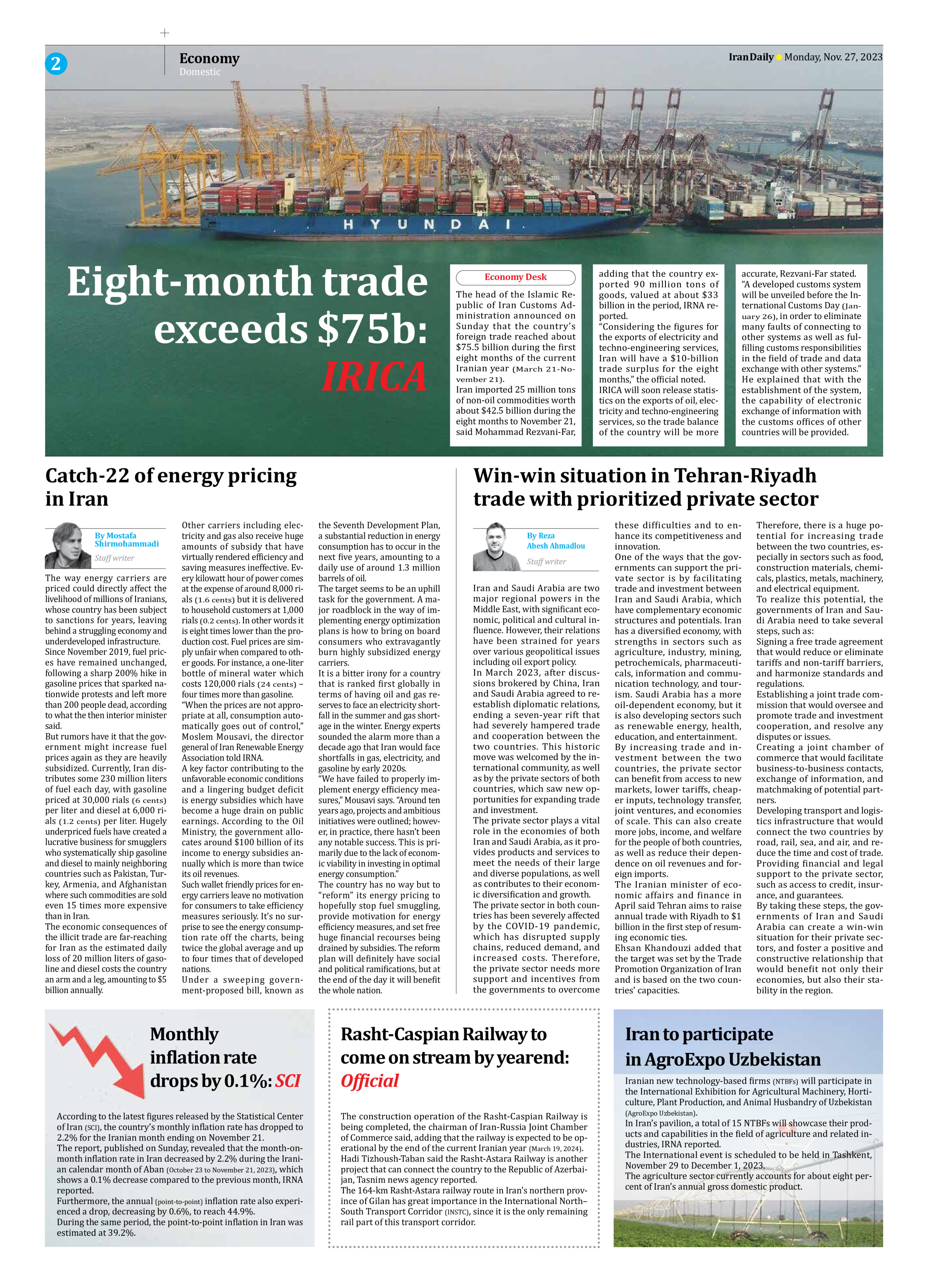
Catch-22 of energy pricing in Iran
By Mostafa Shirmohammadi
Staff writer
The way energy carriers are priced could directly affect the livelihood of millions of Iranians, whose country has been subject to sanctions for years, leaving behind a struggling economy and underdeveloped infrastructure.
Since November 2019, fuel prices have remained unchanged, following a sharp 200% hike in gasoline prices that sparked nationwide protests and left more than 200 people dead, according to what the then interior minister said.
But rumors have it that the government might increase fuel prices again as they are heavily subsidized. Currently, Iran distributes some 230 million liters of fuel each day, with gasoline priced at 30,000 rials (6 cents) per liter and diesel at 6,000 rials (1.2 cents) per liter. Hugely underpriced fuels have created a lucrative business for smugglers who systematically ship gasoline and diesel to mainly neighboring countries such as Pakistan, Turkey, Armenia, and Afghanistan where such commodities are sold even 15 times more expensive than in Iran.
The economic consequences of the illicit trade are far-reaching for Iran as the estimated daily loss of 20 million liters of gasoline and diesel costs the country an arm and a leg, amounting to $5 billion annually.
Other carriers including electricity and gas also receive huge amounts of subsidy that have virtually rendered efficiency and saving measures ineffective. Every kilowatt hour of power comes at the expense of around 8,000 rials (1.6 cents) but it is delivered to household customers at 1,000 rials (0.2 cents). In other words it is eight times lower than the production cost. Fuel prices are simply unfair when compared to other goods. For instance, a one-liter bottle of mineral water which costs 120,000 rials (24 cents) – four times more than gasoline.
“When the prices are not appropriate at all, consumption automatically goes out of control,” Moslem Mousavi, the director general of Iran Renewable Energy Association told IRNA.
A key factor contributing to the unfavorable economic conditions and a lingering budget deficit is energy subsidies which have become a huge drain on public earnings. According to the Oil Ministry, the government allocates around $100 billion of its income to energy subsidies annually which is more than twice its oil revenues.
Such wallet friendly prices for energy carriers leave no motivation for consumers to take efficiency measures seriously. It’s no surprise to see the energy consumption rate off the charts, being twice the global average and up to four times that of developed nations.
Under a sweeping government-proposed bill, known as the Seventh Development Plan, a substantial reduction in energy consumption has to occur in the next five years, amounting to a daily use of around 1.3 million barrels of oil.
The target seems to be an uphill task for the government. A major roadblock in the way of implementing energy optimization plans is how to bring on board consumers who extravagantly burn highly subsidized energy carriers.
It is a bitter irony for a country that is ranked first globally in terms of having oil and gas reserves to face an electricity shortfall in the summer and gas shortage in the winter. Energy experts sounded the alarm more than a decade ago that Iran would face shortfalls in gas, electricity, and gasoline by early 2020s.
“We have failed to properly implement energy efficiency measures,” Mousavi says. “Around ten years ago, projects and ambitious initiatives were outlined; however, in practice, there hasn’t been any notable success. This is primarily due to the lack of economic viability in investing in optimal energy consumption.”
The country has no way but to “reform” its energy pricing to hopefully stop fuel smuggling, provide motivation for energy efficiency measures, and set free huge financial recourses being drained by subsidies. The reform plan will definitely have social and political ramifications, but at the end of the day it will benefit the whole nation.







